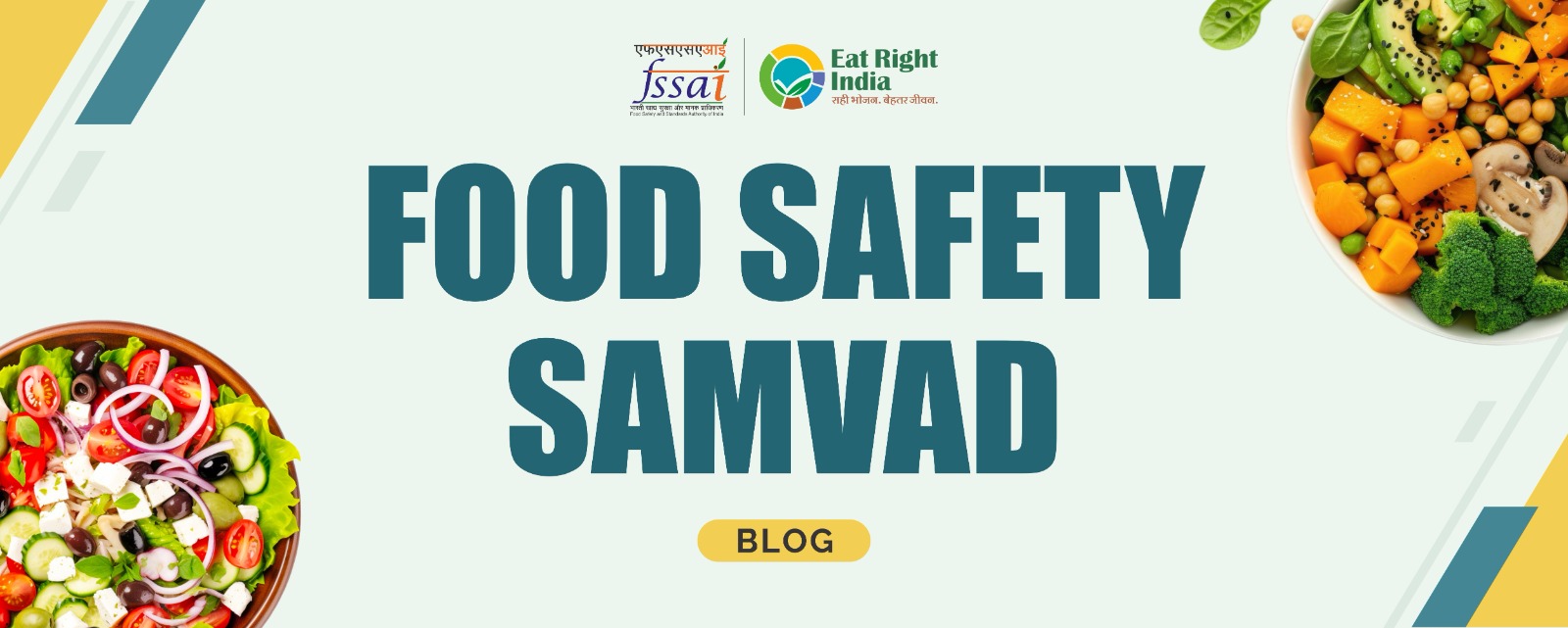
Carbohydrates are not to be blamed for the occurrence of Obesity - Let’s get the right perspective
Let’s us understand carbohydrates, its role in the body, what happens when it is consumed more or less and the right way of consuming carbohydrates
Many of you might have heard from various social media platforms and other forums about carbohydrates (carbs) and its relation in the occurrence of non-communicable disease (NCDs) especially obesity. But the reality is different, there are several other factors responsible for the occurrence of NCDs, especially the crash diet, lack of physical activity, sedentary lifestyle and taking too much stress. With the available scientific evidence, it is to state that carbohydrates in general term are not the culprit causing NCDs. It is the form of carbohydrate which we are taking is of importance. There are several popular dietary recommendations in place that vary in nutritional composition, but all prioritize proteins and fats over carbs.
On the contrary, our ICMR dietary guidelines on Indian Foods prescribes balanced diet for every healthy individual. Balanced diet is the one which provides required amount of calories, protein, vitamins, minerals & adequate fibre which the individual need. (In other words, it fulfils all the nutritional needs of the body). We all know that no single food can provide all the necessary nutrients that is required for the body and there is a need of a judicious mix of variety of foods in our daily diet which can provide the macro & micro nutrients.

The energy requirement of an individual is the level of energy intake from food that will balance energy expenditure. The energy requirement is calculated based on the energy expenditure. The estimate is made for different age group, the energy and the quantity of nutrients needed vary with age, gender, physiological conditions (pregnancy, lactation) & physical activity and type of lifestyle as sedentary, moderately active & heavily active.
The proportion of food to be sourced from different food groups as listed below to meet the Indian dietary requirement, however variation can occur in terms of intake based on the food availability, accessibility, affordability, demands of the body and bioavailability. The average requirements of the recommended dietary allowance can be satisfied over a period of time.
It is ideal to have foods from at least 5 to 7 food groups such as
• Pulses & legumes
• Nuts, oilseeds, oils & fats
• Vegetables, Green leafy vegetables
• Milk
• Meat & flesh foods
• Roots & tubers
Ideally 45% of the calories can be derived from cereals & millets, 15% calories from pulses, beans & meat and rest of the calories shall ideally be derived from vegetables, fruits, nuts & oilseeds and milk. The ICMR dietary guidelines on Indian Foods 2024 recommended to have 50 to 55% of total calories from carbohydrates, 10 to 15% from protein and 20 to 30% from fats. For example, for a sedentary male 2110kcals/day is the Recommended Dietary Allowance (RDA), as per the above, he shall derive 1055 to 1160 kcals from carbohydrates, 211kcals to 316 kcals from protein & 422kcals to 633kcals from fats (1g of carbohydrate and protein will provide 4kcals each and 1 g of gat will provide 9kcals)
As per ICMR, to meet these requirements through vegetarian diet an individual shall consume per day 250g of cereals including millets, 85g pulses, 300g milk/curd, 400g vegetables & green leafy vegetables, 100g fruits, 35g nuts & oil seeds and 27g of fats & oils can be consumed. In case of non- vegetarian diet 55g can be from pulses & 70 g can be from chicken/meat.
It is our paramount duty to follow and abide with the authentic information and the recommendations of the highest body established for the purpose and not to go with any invalidated shares /articles which has no sanctity.
The ICMR guidelines also quoted that 56.4% of total disease burden in India is due to unhealthy diet in addition, the proliferation of highly processed food, supported by aggressive marketing, rapid unplanned urbanization and changing lifestyles have contributed to more people eating unhealthy diets high in energy, free sugars, salt, from saturated fats and trans fats.
Let’s us understand carbohydrates, its role in the body, what happens when it is consumed more or less and the right way of consuming carbohydrates
Carbohydrates is one of the macro nutrient that provide the primary energy source for the body. Carbohydrates are grouped as Simple & complex in general terms
Simple carbohydrates: Monosaccharides and disaccharides are called as Simple carbohydrates. Glucose, fructose and galactose are examples of single-unit sugars, also known as monosaccharides. Sucrose (table sugar is a combination of glucose and fructose) lactose (milk sugar is a combination of glucose & galactose) and Maltose (is a combination of two units of glucose) are double-unit sugars are called disaccharides. These easily are utilized for energy, causing a rapid rise in blood sugar
Foods that contains mono & disaccharides are chocolates, candies, carbonated beverages, corn syrup, ready to drink fruit juice, honey, table sugar etc.
Complex carbohydrates: Starches and dietary fibres are examples of complex carbohydrates Starches contain a large number of glucose molecules. They are also called as polysaccharides and the plants produces these polysaccharides. Examples include roots & tubers, potatoes, rice and wheat.
Dietary fibre consists of non- starch polysaccharides commonly called as roughage and cannot be broken down completely by the human digestive system. It provides sense of fullness and prolonged satiety. It also adds to the bulk that facilitates easy defecation. Fibre rich diet allows gradually degradation of carbohydrates and low serum glucose oscillations. Dietary fibre has two main subtypes: soluble fibre and insoluble fibre which are components of plant-based foods such as legumes, whole grains, cereals, vegetables, fruits, and nuts or seeds.
Soluble fibres dissolves in water. It helps decrease blood cholesterol and LDL levels and blunts postprandial blood glucose levels. Examples are oats, guar gum, rye, barley, fleshy fruit, banana, figs, plums, apple, berries, carrot, broccoli, dried beans & legumes.
Insoluble fibre does not dissolve in water, remains in the intestines, thereby softening and bulking the stool. Coarsely ground insoluble fibre triggers the secretion of mucus in the large intestine providing bulking. However, finely ground insoluble fiber does not have this effect and instead can cause a constipation. Examples: whole grain foods, wheat & corn brans, seeds, nuts, unripe banana and skin of kiwi, grape, tomato & potato.
These are long chain molecules and take longer to digest and have a more gradual effect on the increase in blood sugar.
We all should understand the difference between the Added Sugars & Naturally occurring simple sugars
-
Added sugars are sugars and sugar syrups added to foods and drinks during processing and preparation and they include sugars (free, mono and disaccharides), sugars from syrups and honey, jaggery etc.
• Whereas the naturally occurring simple sugars are the ones inherently present in the food. For example, glucose or fructose in fruits sugar molecules like sucrose (sugar) or lactose in milk.
Now we had a broad idea of the different types of carbohydrates. The Current lifestyle and consumption of highly refined carbohydrate-dense food have a role to play in development of disease through appetite and satiety signalling disruption. The abusive consumption of refined, simple, and low-quality carbohydrates has a direct implication on the physical and mental pathophysiology and raise the level of glucose in blood. Intake of added sugars more than 25 g or 5 teaspoons per day are considered unfavourable. In addition, a high-sugar diet and the simple carbohydrates in the form of added sugar or in processed foods, sweets and refined foods are the concern and to be taken minimal, whereas inclusion of non-starchy vegetables, green leafy vegetables, fresh fruits, cereals & grains (minimally polished) and foods having dietary fibre can be taken liberally. ICMR recommends having energy from 5% added sugar of total energy intake (which is 25 g or 5 teaspoons per day)
The carbohydrates in the foods are broken down into glucose and are converted to energy to be utilised by the body. Any extra glucose in the bloodstream is stored in the liver and muscle tissue. If we consume more carbohydrates than the requirement, the body stores some of these carbohydrates as glycogen and converts the rest to fat. Glycogen is a complex carbohydrate that the body can easily and rapidly convert to energy. Glycogen is stored in the liver and the muscles. If a person consumes less carbohydrates than that is required, then the protein & fats are spared to provide energy, whereas they have several other important roles in the body.
Another eye opener which we always search is whether rice or wheat is good, which is good for pre diabetic / diabetic. It is stated that there are no differences in Glycaemic index*(GI) of wheat chapatti and rice based mixed meals with equivalent AvCHO (Available carbohydrate) content of the staple. However, diet prescriptions often advices for wheat products, this not only limits choice of cereal consumption but also affects compliance of those who have been brought up consuming rice traditionally as a staple. It is widely known that GI of wheat is lower than that of rice, but there are no studies which analysed GI in these cereals based on AvCHO content. Rice and wheat are both cereals having a similar quotient of protein, fat and carbohydrates, it is the individual choice & preference in choosing the grains based on the consumption pattern over years., however the portion control is the key. Also, the matrix in which it is taken is important like, if it is taken in liquid form or in the form of porridge has different impact in the sugar level compared to the form such as roti, idli, dosa etc. Wheat has double the amount of dietary fibre compared to rice.
We also need to understand that both sugar and jaggery has high calorie, only difference is the jaggery has some minerals such as iron, magnesium, potassium etc. Honey contains little less calories per gram than white sugar but due to its viscosity a teaspoon of honey has equal or more calorie than the sugar in terms of glucose-raising properties honey has about the same effects on blood glucose as white sugar & jaggery.
-
Glycemic index is the measure of the increase in the level of blood glucose by eating a specific carbohydrate compared with eating a standard amount of glucose The glycemic index is a scale that ranks the number of carbohydrates in foods from zero to 100, indicating how quickly a food causes a person’s blood sugar to rise.
-
• Low GI: ≤ 55
• Medium GI: 56–69
• High GI: ≥ 70
Key takeaways:

.png)
